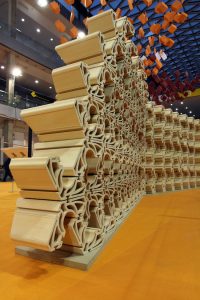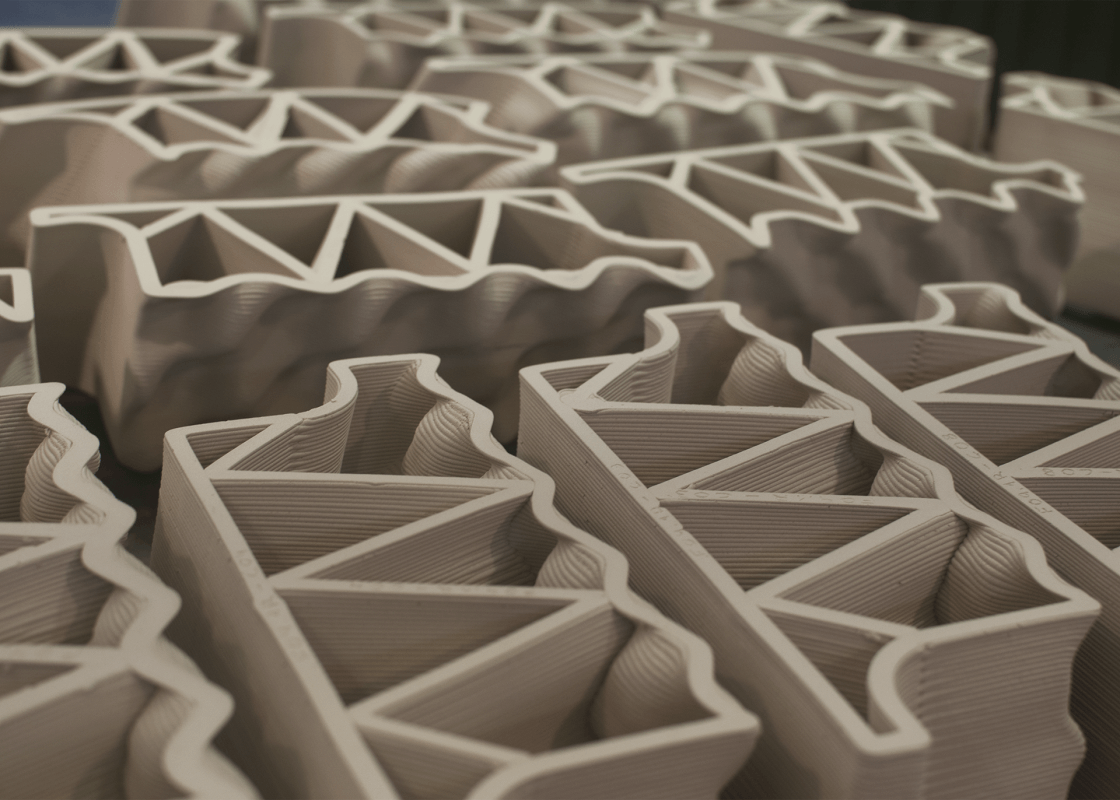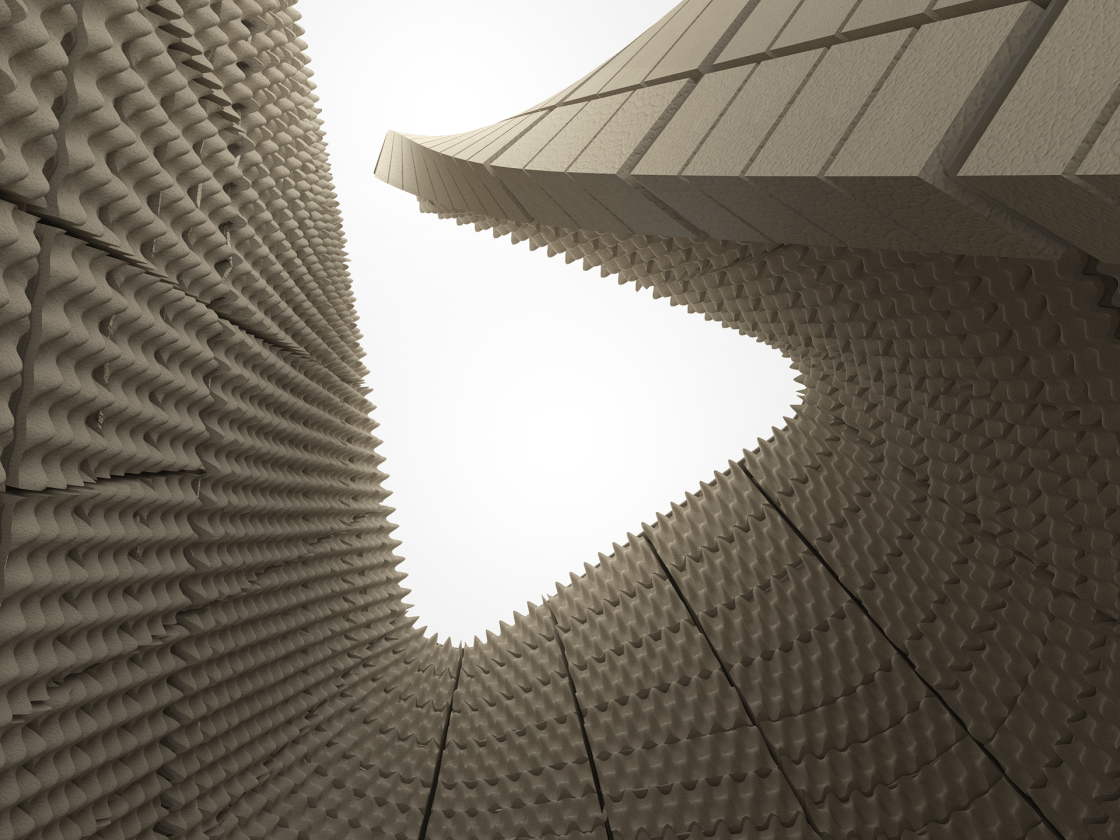The annual Cevi sama fair is the largest exhibition of ceramics and terracotta in the world, and this year a team of students from the Harvard Graduate School of Design’s Material Processes and Systems Group (MaP+S) are presenting a pavilion titled “Ceramic Morphologies.” The project is currently on display during the 2017 Cevisama fair, running from February 20 through 24.
sama fair is the largest exhibition of ceramics and terracotta in the world, and this year a team of students from the Harvard Graduate School of Design’s Material Processes and Systems Group (MaP+S) are presenting a pavilion titled “Ceramic Morphologies.” The project is currently on display during the 2017 Cevisama fair, running from February 20 through 24.
The “Ceramic Morphologies” pavilion is meant to showcase the expressive potential of ceramic 3-D printing, and test the adaptation of principles of thermodynamic heat transfer to 3-D printed geometry. The shape and design are products of current research related to the thermal performance of naturally ventilated spaces. While the exterior surface of the pavilion is smooth and uniform, the interior surface is heavily contoured and 3-D-textured.
In addition to creating a unique relationship between interior and exterior space, the geometry of this undulating surface relates to research on the optimal dimensions for thermodynamic heat transfer. Supplemented with production and material research by the Instituto de Tecnología Cerámica in Castellón, Spain, the project is a prototype for the additive manufacturing of ceramic building components at the industrial scale.

The project team comprises MaP+S director Martin Bechthold (DDes ’01), the GSD’s Kumagai Professor of Architectural Technology; Salmaan Craig, Lecturer in Environmental Technology; and students Nono Martínez Alonso, Jose Luis Garcia Del Castillo, Tiffany Cheng, Kevin Hinz, Namju Lee, Zhiwei Liao, Matan Mayer, Saurabh Mhatre, Zach Seibold, Santiago Serna González, and Juan Pablo Ugarte.
The project utilizes a proprietary clay extrusion system and three-axis armature to produce each of the pavilion’s 552 unique ceramic elements. Each element is sized according to its position within the structure, the dimensional constraints of the printing bed, and a maximum allowable toolpath length. The team developed a novel computational approach to generate the surface geometry of the pavilion, discretize the form into individual bricks, and accommodate for the structural metal frame. Toolpath geometry and machine code is also generated directly within the parametric model. The digital workflow enabled the research team to account for shrinkage during the drying and firing process, reduce overall printing time and material consumption, and tune the stability of individual bricks.
All images courtesy Material Processes and Systems (MaP+S) Group.
